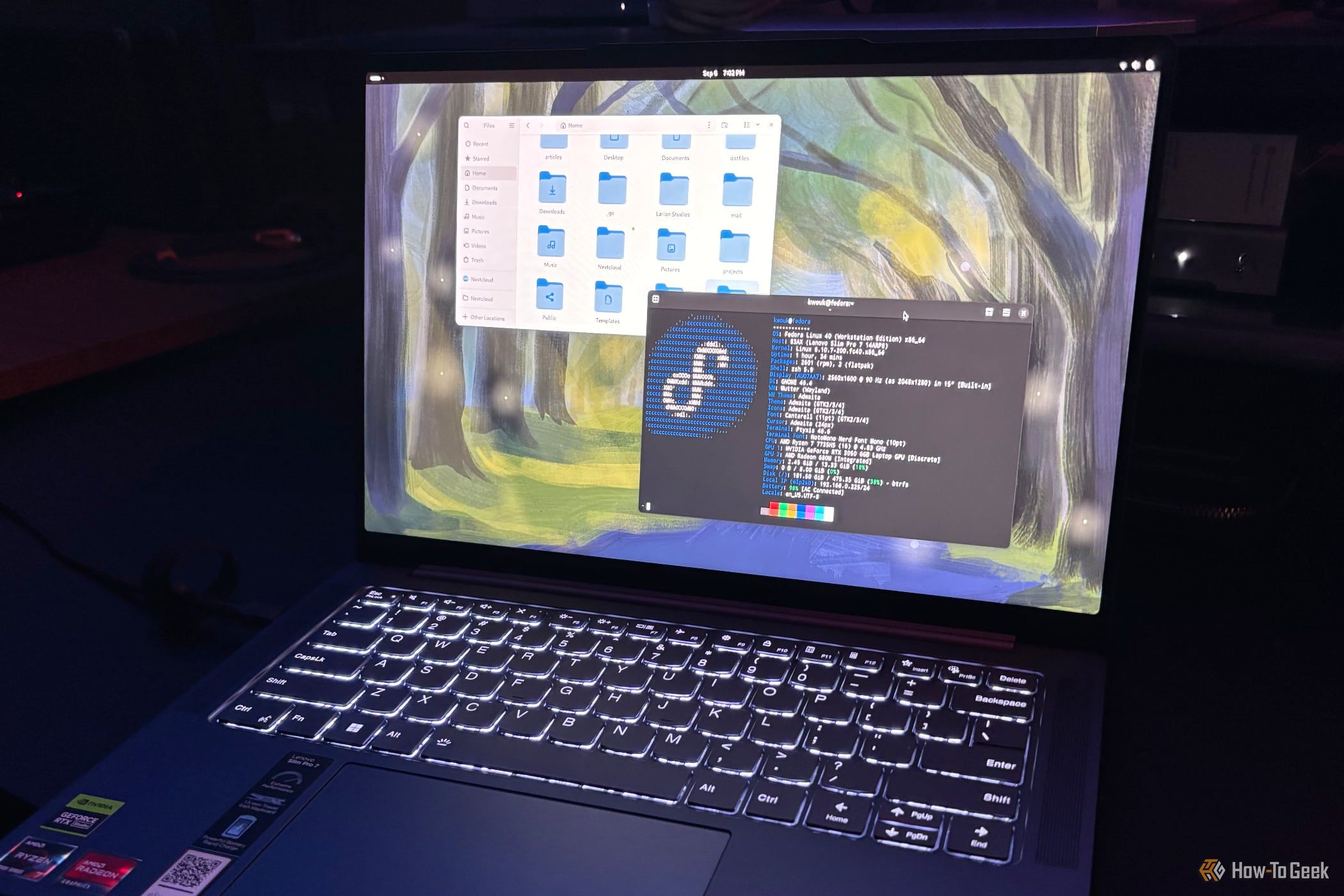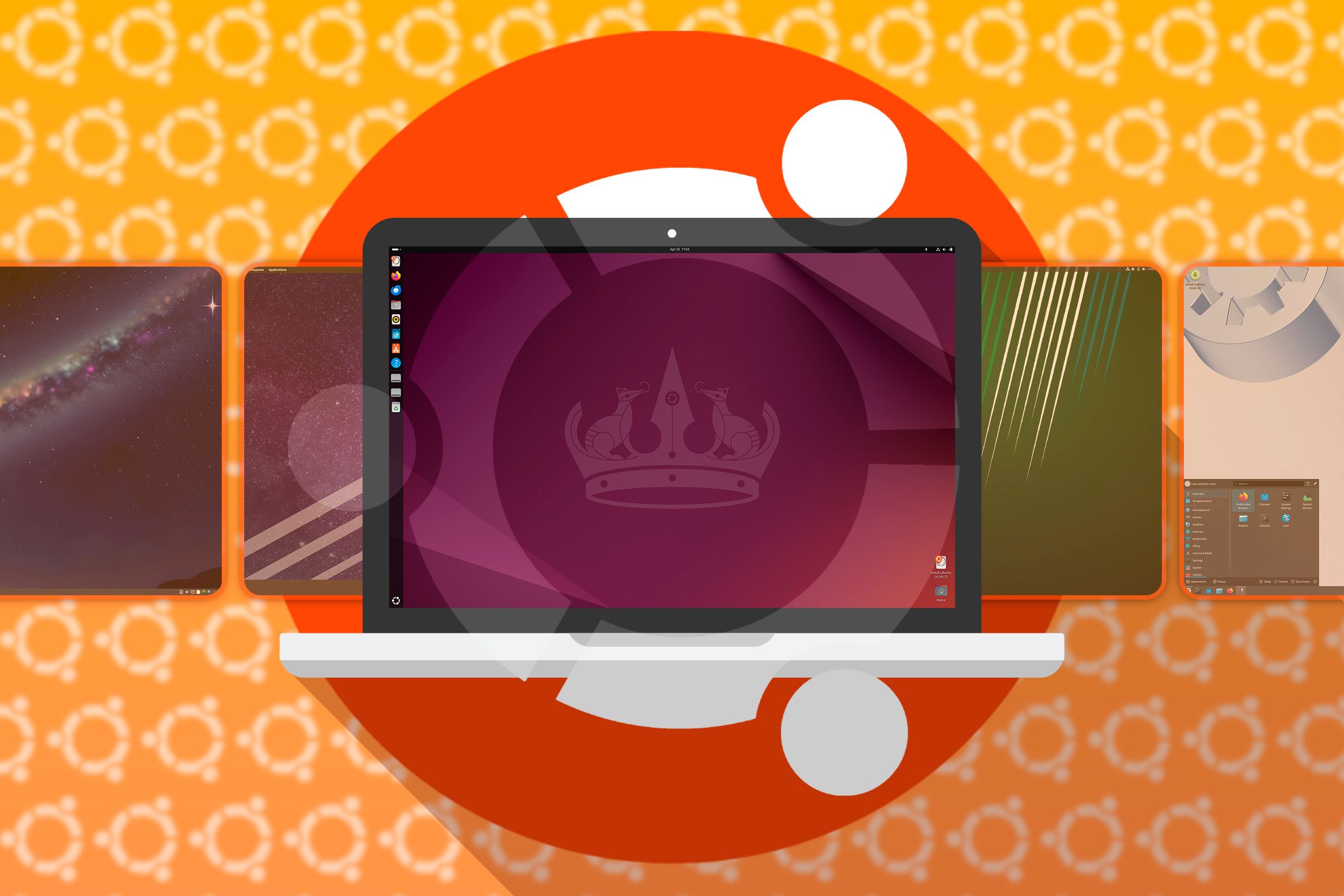Are you a GNOME user wondering if your current Linux distro is the best way to experience the popular desktop environment? Do you want to test other distros but don’t know where to start? Well, here are the top five Linux distros using GNOME that deserve your attention!
The GNOME desktop environment has earned a reputation for its clean and polished design paired with a unique and intuitive workflow. But depending on the underlying distro, the overall user experience of GNOME can change drastically. Some distros tend to augment GNOME with a few additional tools (GNOME Extensions) to make it more user-friendly, while others opt for heavier customization to create a completely new user experience.
The distro also controls software availability, hardware compatibility, and update frequency. This means learning about the various GNOME-based distros puts you one step closer to finding your forever distro that not only meets your aesthetic desires but also aligns with your overall system philosophy.

Related
How I Found the Perfect Linux OS and Stopped Distro-Hopping
How I recovered from shiny object syndrome.
5
Fedora: Best Way to Experience Vanilla GNOME
Fedora lets you experience GNOME exactly as its developers intended! It’s the distro to use if you want to experience the latest stable GNOME releases as soon as they come out. Fedora releases new versions every six months, so you’ll live with relatively new and cutting-edge software all the time. The main caveat is that the distro mainly focuses on Free and Open Source Software (FOSS). That said, you can get access to closed-source proprietary software if necessary by enabling third-party repositories, but that’s another hoop to jump through that you should know about.
Why You Should Consider Fedora:
- Be among the first to experience new versions of GNOME as soon as they come out.
- SELinux is enabled by default for enhanced system security.
- Tons of developer-friendly tools right out-of-the-box.
Why Fedora Might Not Be for You:
- Lack of closed-source software out-of-the-box might make installing the distro problematic on hardware requiring proprietary drivers (e.g., PCs running NVIDIA GPUs).
- Each version of Fedora is only supported for 13 months, making it suboptimal if you’re seeking long-term stability.

Related
Why I Keep Coming Back to Fedora Workstation
Great hardware support, a stable base, and up-to-date software make Fedora easy to stick with.
4
Manjaro Linux: Stay Cutting Edge With GNOME
If Fedora isn’t current enough, the Manjaro GNOME edition might be your pick. As an Arch-based distro, it follows a rolling release cycle, meaning you get access to new software updates shortly (within days) after they’re released. That said, I should mention the distro slightly deviates from the vanilla GNOME experience by including a macOS-like dock on the bottom and replacing the GNOME software center with Pamac—which I personally like more!
Why You Should Consider Manjaro
- Includes many graphical tools to make Arch Linux accessible to more users.
- Great hardware support with tools to help you easily install the necessary software.
- Access to the Arch User Repository (AUR) gives you access to tens of thousands of software packages.
Why Manjaro Might Not Be for You
- You need to update your distro regularly—weekly or at least bi-weekly.
- If you use GNOME Extensions, be aware that some major GNOME version updates might break them.
- While easy to use, it’s not ideal for users completely new to Linux.
|
Best For |
|
|---|---|
|
Minimum Requirements |
|
|
Download Link |

Related
Why I Switched From Ubuntu to Manjaro Linux
Why migrate to Manjaro after a decade on Ubuntu? Here’s why our Linux expert made the leap.
3
Ubuntu: GNOME Refined for the Mainstream
Ubuntu, the most widely recognized Linux distro, also runs GNOME as its default desktop environment, albeit a slightly customized version. The main changes include a persistent left-side dash for pinned and running apps, support for desktop icons, and replacing GNOME Software with Ubuntu’s own App Store. I’m personally not a fan of the App Store, but that’s a problem easily solved by installing Synaptic using this command:
sudo apt update && sudo apt install synaptic
Why You Should Consider Ubuntu
- Option to choose between a Long-Term Support (LTS) release where new versions are released every two years and supported for five years, and a non-LTS release where new versions are released every six months and supported for nine months.
- Excellent driver support and works on most hardware out-of-the-box.
- Includes AppArmor by default as an additional security layer.
- As the most popular distro, almost all Linux tutorials are written with the assumption you’re using Ubuntu.
Why Ubuntu Might Not Be for You
- The default software center pushes Snap apps, which are known to be slower and take up more storage compared to DEB apps.
- Opt-out telemetry features (anonymized) after the system set-up phase may concern users seeking absolute privacy\.
|
Best For |
|
|---|---|
|
Minimum Requirements |
|
|
Download Link |

Related
I’m a Distro-Hopper, But Here’s Why I Come Back to Ubuntu Every Time
It’s the most popular distro for a reason.
2
Pop!_OS: GNOME Re-imagined for Productivity
Pop!_OS is the flagship Linux distro from computer manufacturer System76. You can choose to have the distro installed on laptops, desktops, and servers you buy from them, or you can download and install it on your current system. The distro is based on Ubuntu with a heavily customized version of GNOME focused on power users.
They’ve replaced the Activities Overview with the old vertical workspace switcher found before GNOME 40. The Applications Overview is also replaced with a pop-up app launcher, somewhat similar to the Windows 11 app menu. There’s also a bottom dock like macOS for all your pinned and running apps. GNOME Software is also replaced with the Pop!_Shop. However, the main standout feature is their Pop Shell extension, which you can use to enable automatic window tiling with keyboard-centric navigation that appeals to many power users.
At the time of writing, Pop!_OS ships with GNOME, but in future releases, they plan to shift to COSMIC—a desktop environment System76 is actively developing. It’s currently in Alpha and being tested.
Why You Should Consider Pop!_OS
- Offers an ISO with NVIDIA drivers pre-installed for optimal compatibility with systems running NVIDIA GPUs.
- Pop Shell integration makes it easy to enable auto-tiling if and when necessary.
- Tons of tailored apps are available through the Pop!_Shop, tailored towards developers and creatives.
- Despite being based on Ubuntu, it ditches Snaps in favor of DEB packages and Flatpaks.
Why Pop!_OS Might Not Be for You
- It’s a heavily customized version of GNOME that overhauls major aspects of the default workflow.
- It often uses older GNOME versions to maintain stability with all the different GNOME Extensions.
|
Best For |
|
|---|---|
|
|
|
Download Link |
1
Zorin OS: GNOME for New Linux Users
Zorin OS is based on the Ubuntu LTS version and uses a heavily customized version of GNOME, customized to look like Windows. You have a taskbar at the bottom with a Start Menu-like app launcher to the left, followed by a section for pinned apps and quick settings to the right. It’s when you hit the Super key (Windows key) that you realize you’re in GNOME as you trigger the Activities Overview. Now, by default, Zorin OS looks like Windows 7, but you can change that using the Zorin Appearance app and make your distro look like Windows XP, macOS, or something else entirely.
Why You Should Consider Zorin OS
- The Ubuntu LTS core offers rock-solid stability and reliability in day-to-day usage.
- Extremely user-friendly with a default design reminiscent of Windows 7 that’ll appeal to Windows migrants.
- Ships with Wine out of the box, which lets you run some Windows software on this Linux distro.
Why Zorin OS Might Not Be for You
- Some appealing layouts in Zorin Appearance are only accessible if you pay for the paid version of the distro—Zorin OS Pro.
- New Zorin OS upgrades usually trail Ubuntu LTS releases by months (sometimes years).
|
Best For |
|
|---|---|
|
|
|
Download Link |

Related
Which Distro Should You Choose?
The overall user experience with GNOME will be more or less the same whether you’re using Fedora, Ubuntu or Manjaro, as all of them adhere to the core GNOME workflow with the Activities Overview and Applications Overview. With that being said, if you prioritize a vanilla unadulterated experience at the very top, go with Fedora. Ubuntu’s LTS release is the better choice for long-term stability, whereas you should pick Manjaro if you care about quick access to newly released software.
Now, if what attracts you to GNOME is the overall polish of the desktop environment, but you want a more traditional Windows 7-ish desktop experience, go with Zorin OS. This just leaves us with Pop!_OS. I would recommend it to you if you enjoy working with keyboard shortcuts and want to experience auto-tiling windows without committing to the complexity that comes with a full-blown tiling window manager.
How to Get Started
Once you pick a Linux distro you like and download the ISO file, there are a few ways you can test drive the distro. My personal recommendation would be installing it in VirtualBox to get a feel for the distro without making changes to your current setup. That said, performance might take a hit when you run a distro using a virtual machine, so don’t use it as a way to test the distro’s fluidity but rather to test the workflow and different features. Once you know that it hits all the checkboxes important to you, go ahead and install the distro on your computer.





